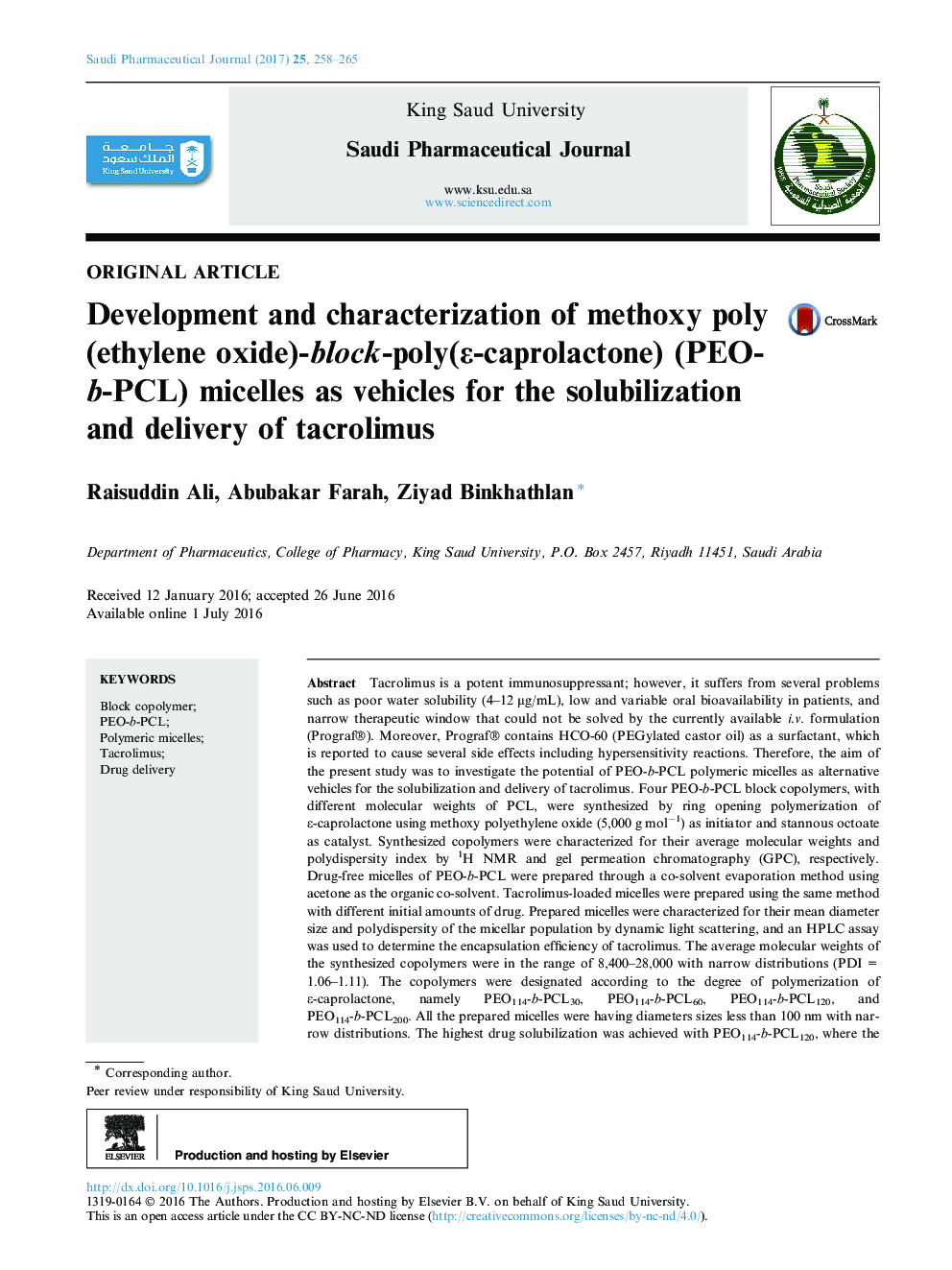| Article ID | Journal | Published Year | Pages | File Type |
|---|---|---|---|---|
| 5551599 | Saudi Pharmaceutical Journal | 2017 | 8 Pages |
Tacrolimus is a potent immunosuppressant; however, it suffers from several problems such as poor water solubility (4-12 μg/mL), low and variable oral bioavailability in patients, and narrow therapeutic window that could not be solved by the currently available i.v. formulation (Prograf®). Moreover, Prograf® contains HCO-60 (PEGylated castor oil) as a surfactant, which is reported to cause several side effects including hypersensitivity reactions. Therefore, the aim of the present study was to investigate the potential of PEO-b-PCL polymeric micelles as alternative vehicles for the solubilization and delivery of tacrolimus. Four PEO-b-PCL block copolymers, with different molecular weights of PCL, were synthesized by ring opening polymerization of ε-caprolactone using methoxy polyethylene oxide (5,000 g molâ1) as initiator and stannous octoate as catalyst. Synthesized copolymers were characterized for their average molecular weights and polydispersity index by 1H NMR and gel permeation chromatography (GPC), respectively. Drug-free micelles of PEO-b-PCL were prepared through a co-solvent evaporation method using acetone as the organic co-solvent. Tacrolimus-loaded micelles were prepared using the same method with different initial amounts of drug. Prepared micelles were characterized for their mean diameter size and polydispersity of the micellar population by dynamic light scattering, and an HPLC assay was used to determine the encapsulation efficiency of tacrolimus. The average molecular weights of the synthesized copolymers were in the range of 8,400-28,000 with narrow distributions (PDI = 1.06-1.11). The copolymers were designated according to the degree of polymerization of ε-caprolactone, namely PEO114-b-PCL30, PEO114-b-PCL60, PEO114-b-PCL120, and PEO114-b-PCL200. All the prepared micelles were having diameters sizes less than 100 nm with narrow distributions. The highest drug solubilization was achieved with PEO114-b-PCL120, where the aqueous solubility of tacrolimus exceeded 300 μg/mL. Our results show a potential for PEO-b-PCL micelles as solubilizing vehicles for the delivery of tacrolimus.
